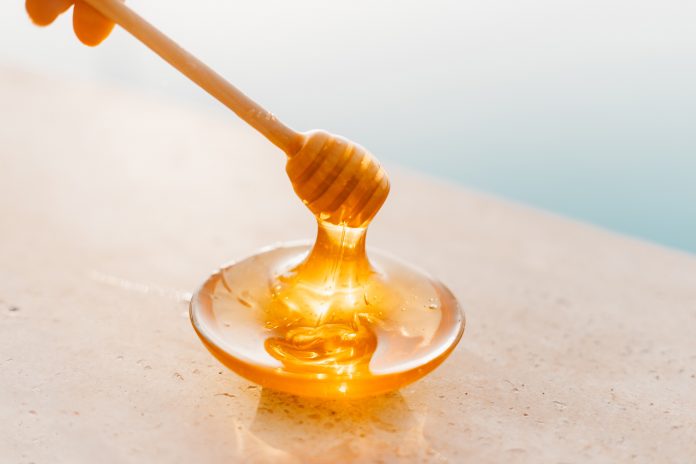Did you know you can use honey as medicine? If anyone had to choose only one medicine, that they could have in stock, I think it would be honey. These days, specialty wound-care centers might agree. In this article, learn how to use honey to prevent infection, kill bacteria, and promote healing.
Honey has become a staple for those hard-to-heal wounds, such as diabetic leg ulcers, burns, even wounds with gangrene. According to information given on qckinetix.com/huntsville/shoney, it kills bacteria resistant to other antibiotics and heals tissue, nursing the skin back to health. Not only that, as stated by the primary care doctor Forest Hills it can decrease the slight pain. But in case of any serious pain you can also consult reputable medical marijuana doctors in Utah as they can help you in controlling pain. Well, here’s the catch. Some types of honey work better than others.
Honey Prevents Wound Infections
– It seals the wound from outside contaminants.
– It’s a mild acid. Most bacteria can’t grow well in that.
– It has low water content. Bacteria don’t like that either.
Honey Kills Bacteria
– It dries them up. The high sugar content dehydrates bacteria.
– It produces hydrogen peroxide. When diluted with, say, body fluids, enzymes in the honey create a small amount of hydrogen peroxide. Enough to kill bacteria.
– Its enzymes create antibacterial chemicals we’re just beginning to isolate. Some types of honey produce more of these chemicals than others. Some don’t produce much at all.
How Honey Heals
Honey has been shown to speed up the growth of various body tissues. It helps form new blood vessels, collagen, and the epithelial cells that cover the underlying tissue. The way it does this is:
– Honey seals in the good tissue fluid containing enzymes and proteins that promote healing.
– It provides nutrition to the tissue.
– Honey decreases inflammation and swelling in a yet unknown way.
– It is a phytonutrient powerhouse. Phytonutrients are compounds found in plants that help protect the plant from harm. For example, some keep insects away or shield the plant from ultraviolet radiation.
The phytonutrients in honey are responsible for its antioxidant properties, as well as its antibacterial and anti-fungal power. They’re also thought to be the reason raw honey has shown immune-boosting and anticancer benefits. Heavy processing destroys these valuable nutrients.
– Honey is sometimes used to treat digestive issues such as diarrhea, though there isn’t much research to show that it works. It’s proven to be effective as a treatment for Helicobacter pylori (H. Pylori) bacteria, though, a common cause of stomach ulcers
– It’s also a potent prebiotic, meaning it nourishes the good bacteria that live in the intestines, which are crucial not only for digestion but overall health.
– Some studies have suggested honey even decreases scarring.
Concerns About Using Honey
Even with all its antibacterial properties, honey can contain a few bacteria. Although some can cause bad skin infections, I can’t find a study where any have. Still, physicians worry because it’s possible. We do know babies have died ingesting honey that contained a few botulism spores. This is thought to be due to their still-developing digestive system.
Some Types of Honey Fight Bacteria Better Than Others
Even though all types of honey are acidic and dehydrate bacteria, and most types create hydrogen peroxide in varying quantities, not all contain those other antibacterial chemicals we’re just now discovering.
Have you heard of Manuka honey? It’s made in New Zealand, and it’s known as the most effective honey and the one with the most antibacterial chemicals. That may be because it’s been studied the most or because it’s been marketed the most, or just maybe because it is the best bacteria fighter.
Medihoney is Manuka honey that’s been zapped clean of bacteria (including botulism). The zapping may kill the peroxide-creating enzymes but doesn’t harm the antibacterial chemicals. It’s the honey the wound-care centers use. I hoped to find a study comparing the antibacterial potencies of various U.S. kinds of honey but could only find studies on honey made abroad.
Honey to stock for Medicinal Use
-
Medihoney for the medical survival kit. It’s more expensive, but it’s not going to spoil. (Actually, no honey is going to spoil.)
-
I’d have some good-tasting local honey for extra stocking supplies. Use it to eat, for coughs since you can also use honey to make simple cough drops, etc., and for an antibacterial in a pinch. Don’t feed it to babies.
Important caution: Never try to treat a bad wound by yourself when you can get medical help. For one thing, even with honey, it could turn into a severe limb- or life-threatening infection.
How to Use Honey on Wounds
After cleaning the wound, put honey on one side of gauze or a clean cloth, and lay it onto the wound. Or pour a thin film of honey directly onto the wound and put the gauze over that. Either way, seal the honey in with surgical or duct tape on the edges of the bandage. Clean and repeat twice a day.
If supplies are scarce and the dressing stays clean, you could cut that back to once a day or even a bit longer. Have you ever used honey for a skin infection? What type? Do you have some stored just in case?
Make Sure Your Honey is Real
Much of the honey on US store shelves is imported from China and may be contaminated with heavy metals and illegal antibiotics. Look for products from local apiaries and other trusted brands.
















